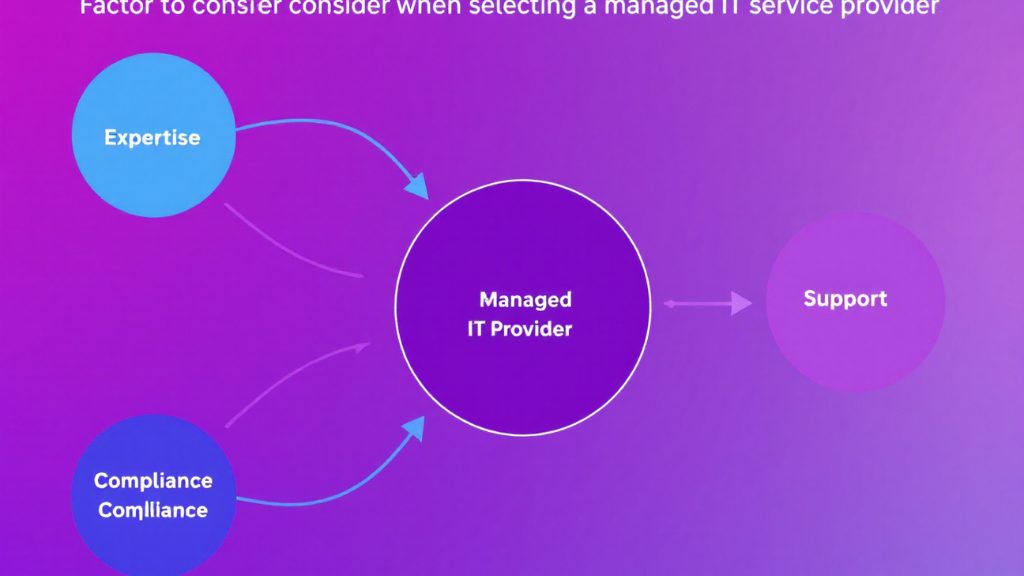How Managed IT Services Help Minimize Business Downtime
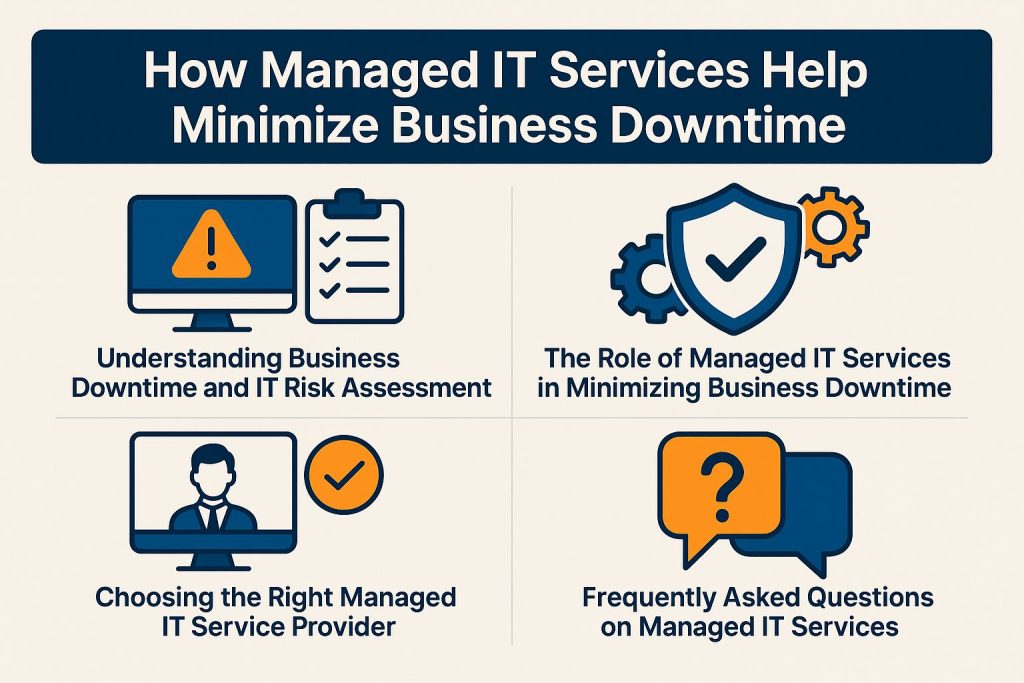
Today, downtime threatens all businesses. Understanding how downtime affects operations is essential. It helps maintain productivity and profitability. This article looks at how managed IT services minimize interruptions. It highlights key services, like IT support and proactive maintenance, that reduce downtime.
What is Business Downtime?
Business downtime is when an organization cannot operate effectively. This impacts efficiency and IT performance. Downtime can arise from technical failures, cyber incidents, or natural disasters.
Companies must recognize the consequences of downtime. It can lead to financial losses, disrupt continuity, and hurt client satisfaction.
To mitigate these risks, organizations must implement a robust IT strategy. This includes disaster recovery, data backup plans, and proactive maintenance. As mentioned, understanding the hidden costs of IT downtime can provide insights into the financial implications and ensure resilience against unforeseen events.
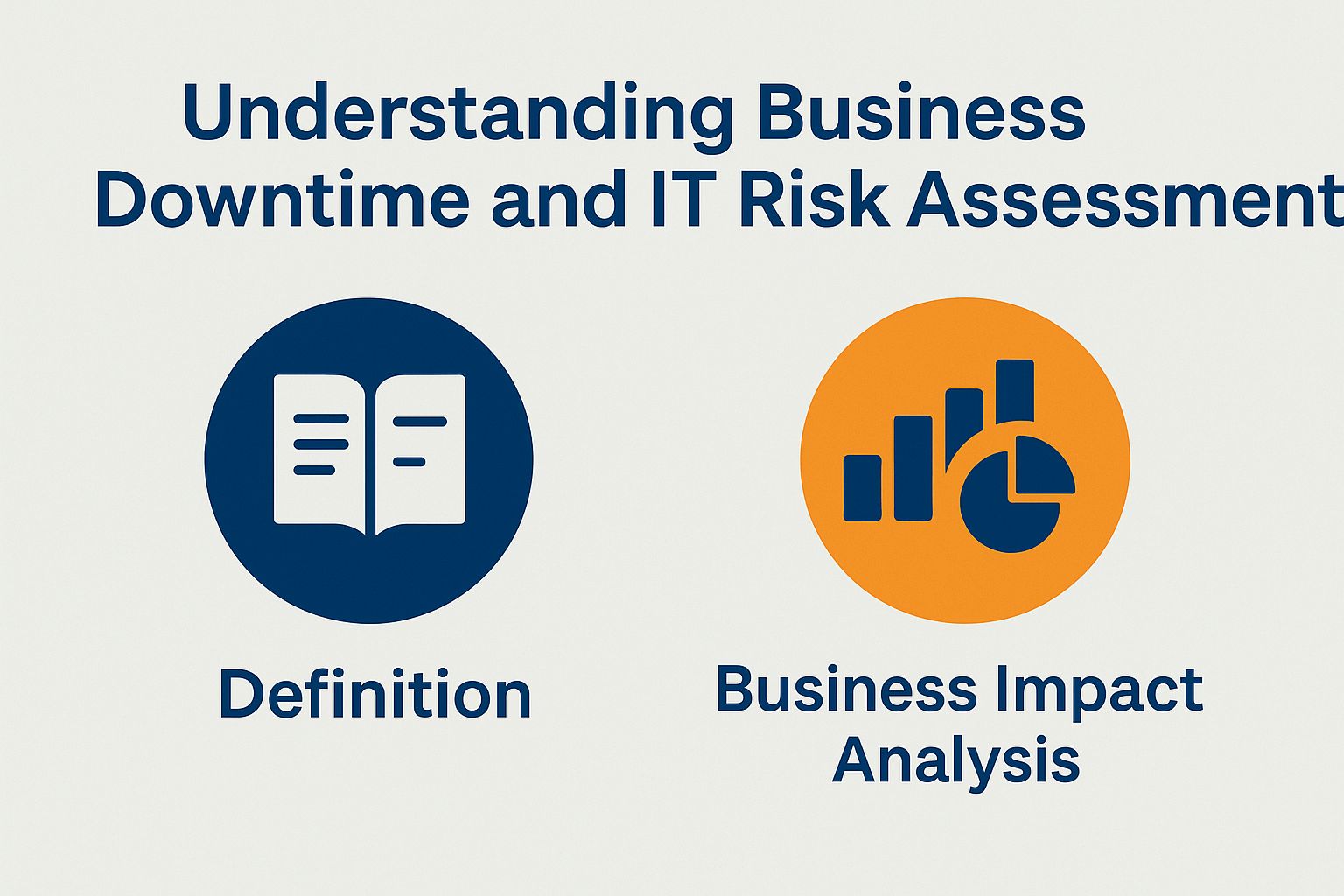
Definition and Impact of Business Downtime
Business downtime is when critical operations are disrupted. This leads to financial losses and decreased productivity. Disruptions may come from hardware failures, software issues, or cybersecurity attacks. These can hurt performance metrics.
Understanding the types of downtime is essential for management. They can be planned or unplanned. Planned downtime involves scheduled maintenance. Unplanned downtime occurs unexpectedly, like during power outages or system crashes.
The impacts of downtime go beyond financial losses. They affect employee morale, customer satisfaction, brand reputation, and business continuity. Organizations that prioritize uptime create resilient operations. This reduces disruptions and builds customer trust.
Investing in preventive measures reduces disruptions and supports long-term growth.
The Role of Managed IT Services in Minimizing Business Downtime and Enhancing IT Governance
Managed IT services minimize downtime by providing IT support, technology consultations, and ensuring network reliability and security.
Using advanced cloud solutions, organizations enhance disaster recovery. They can also implement proactive maintenance to reduce disruption risks. Those curious about the technical implementation might appreciate our guide on how Greenville companies are leveraging cloud computing for growth.
Managed service providers have the expertise to optimize IT infrastructure and improve network management. This lets businesses focus on core operations without worrying about technical failures or security breaches.
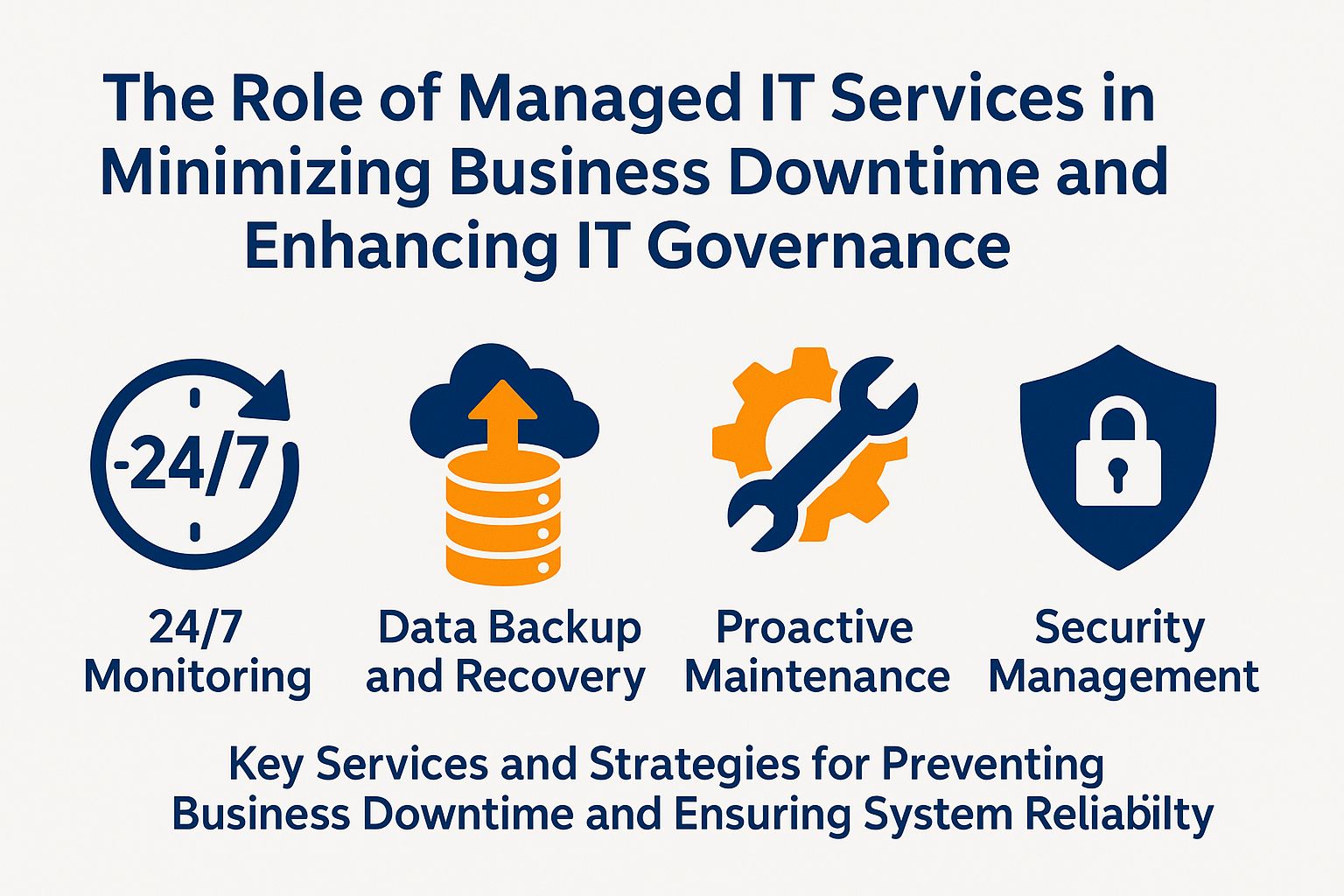
Key Services to Prevent Business Downtime
To prevent business downtime, companies should use services from managed IT providers. These include IT support, disaster recovery planning, cloud solutions, monitoring tools, and incident management strategies.
Service level agreements (SLAs) ensure organizations receive timely support. They also keep IT environments monitored for potential threats or performance issues.
Proactive monitoring tools help businesses gain real-time insights. They identify anomalies quickly, preventing critical issues.
Effective incident management helps teams respond quickly to disruptions. This minimizes recovery time and keeps operations running (as outlined in our comprehensive guide to managed IT services).
Managed IT service providers design disaster recovery plans. This protects against data loss and helps vital operations resume quickly.
These strategies create a strong framework. Organizations can focus on their core missions and rely on experts to manage risks.
Choosing the Right Managed IT Service Provider for IT Efficiency and Compliance
Choosing the right managed IT service provider is crucial. It helps businesses minimize downtime and ensures strong IT support and stability.
Organizations should assess potential providers based on their expertise, range of services, and capacity to align with compliance standards and business objectives.
Effective vendor management improves client satisfaction and reduces risks from third-party services. Related insight: Greenville IT Support Partner: What to Expect
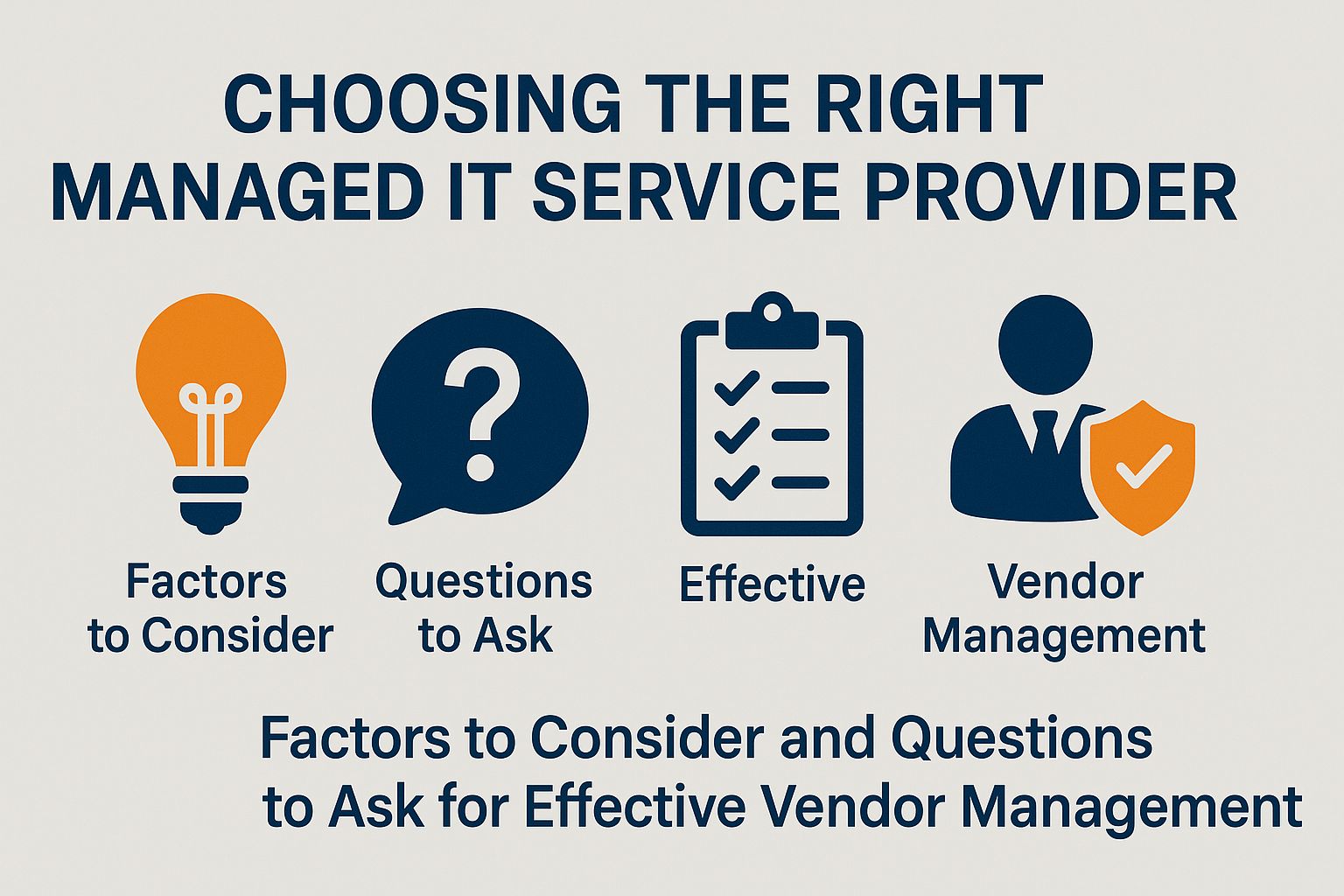
Factors to Consider and Questions to Ask for Effective Vendor Management
When evaluating managed IT providers, consider key factors. These include technology management, scalability, service automation, and incident response.
Ask important questions about performance metrics, service delivery, and incident handling. This ensures minimal disruption to business operations.
It is essential to assess the provider’s ability to adapt and grow with your organization. Business needs can change rapidly. Inquiring about their experience in similar industries and how they uphold rigorous performance standards can offer valuable insights into their reliability.
Organizations should also explore the specifics of the provider’s incident response plans; understanding how quickly they can identify, escalate, and resolve issues can significantly impact overall system uptime.
Successful vendor partnerships need clear communication and a focus on service optimization. These discussions improve IT infrastructure.
Frequently Asked Questions on Managed IT Services and IT Strategy
How can Managed IT Services minimize business downtime?
Managed IT Services minimize downtime by monitoring and maintaining IT systems. They identify issues early and implement backup and recovery plans.
What are the benefits of using Managed IT Services to minimize business downtime?
The benefits of using Managed IT Services to minimize business downtime include increased efficiency, productivity, reduced risk of data loss, network security and security breaches, cost reduction, and improved customer satisfaction.
What types of businesses can benefit from Managed IT Services to minimize downtime?
All types of businesses can benefit from Managed IT Services to minimize downtime, regardless of their size or industry. From small startups to large corporations, Managed IT Services can provide crucial support and maintenance for IT systems.
How does proactive monitoring help prevent business downtime?
Proactive monitoring involves regularly tracking and analyzing the performance of IT systems, detecting and addressing potential issues before they cause downtime. This allows for swift resolution of problems and minimizes the impact on business operations.
What is included in a Managed IT Services package for minimizing business downtime?
A Managed IT Services package for minimizing business downtime typically includes proactive monitoring, regular maintenance and updates, data backup and disaster recovery plans, and ongoing support and assistance for any IT issues that may arise.
Can Managed IT Services help with disaster recovery in the event of a major IT issue?
Yes, Managed IT Services can provide disaster recovery plans and support in the event of a major IT issue or system failure. This ensures that businesses can quickly and effectively recover from any downtime and resume operations as soon as possible.


